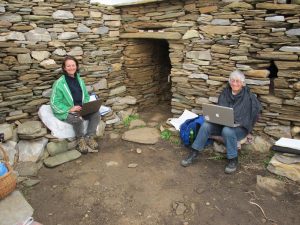
This year, 2013, is the first full excavation season at Zagora since the 1960s and 70s. This post is based on a conversation I had with Professor* Margaret (Meg) Miller and Dr Lesley Beaumont on site at Zagora on Wednesday 25 September 2013, when they explained how the Zagora Archaeological Project (ZAP) directors decided where to excavate this year.
In a future post I will present the approach of the third director, Dr Stavros Paspalas, to how the archaeological finds are being processed at the Andros Museum, and what they are hoping the finds reveal about the settlement at Zagora.
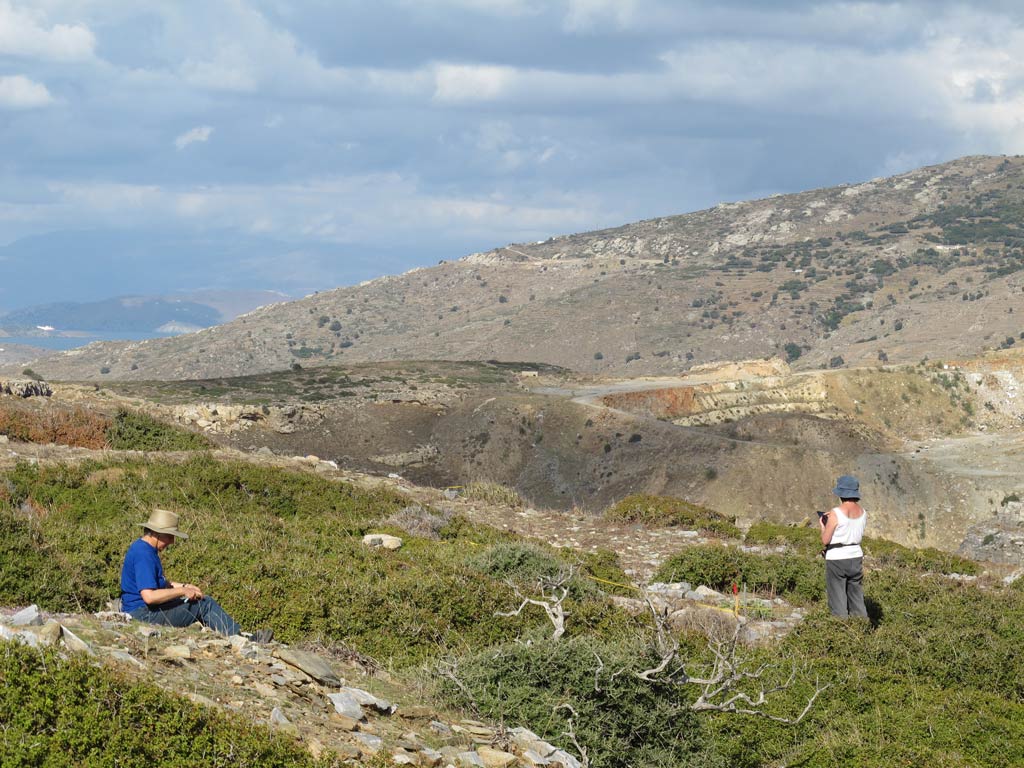
Key factors to siting of trenches in 2013
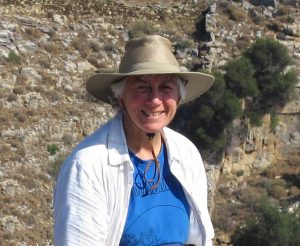
The ZAP directors determined two key factors for where to site trenches this year:
1) in response to the results of last year’s site reconnaissance, topographical planning and the geophysical subsurface analysis in those areas where it was possible to do so (in some cases the terrain – rocks, thick spiky bushes, etc. prevented this work from being possible in the available time).
2) to get a picture of how the site worked as a settlement – a primary project aim. This means this year they are looking beyond the house interiors and outward to the courtyards and open communal spaces as well as perhaps finding out more about the house interiors; they are also hoping to investigate areas of industrial activity.
The site is huge – much larger than it appears from the photographs taken from the walk down to the site. Part of the reason for this is that the settlement extends far beyond the distant field wall you can see in the photographs. You don’t see that whole section of the settlement in the photographs because the land slopes away beyond that wall.
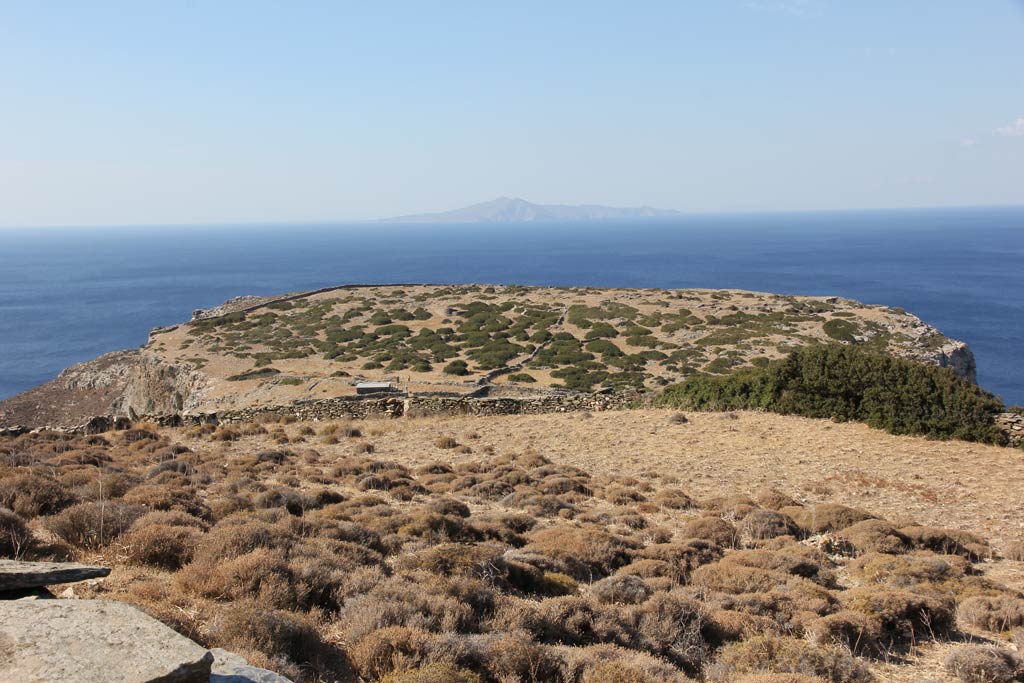
There’s no way the whole settlement site could be excavated, nor would the directors want to because archaeology entails destruction. Once you’ve excavated, you’ve changed how the site was left. These days, there is a great deal of photographic and text documentation of each phase of the excavation – but still, archaeological excavation changes the site. So, even on small sites, ideally, it’s good to leave a portion unexcavated for future study.
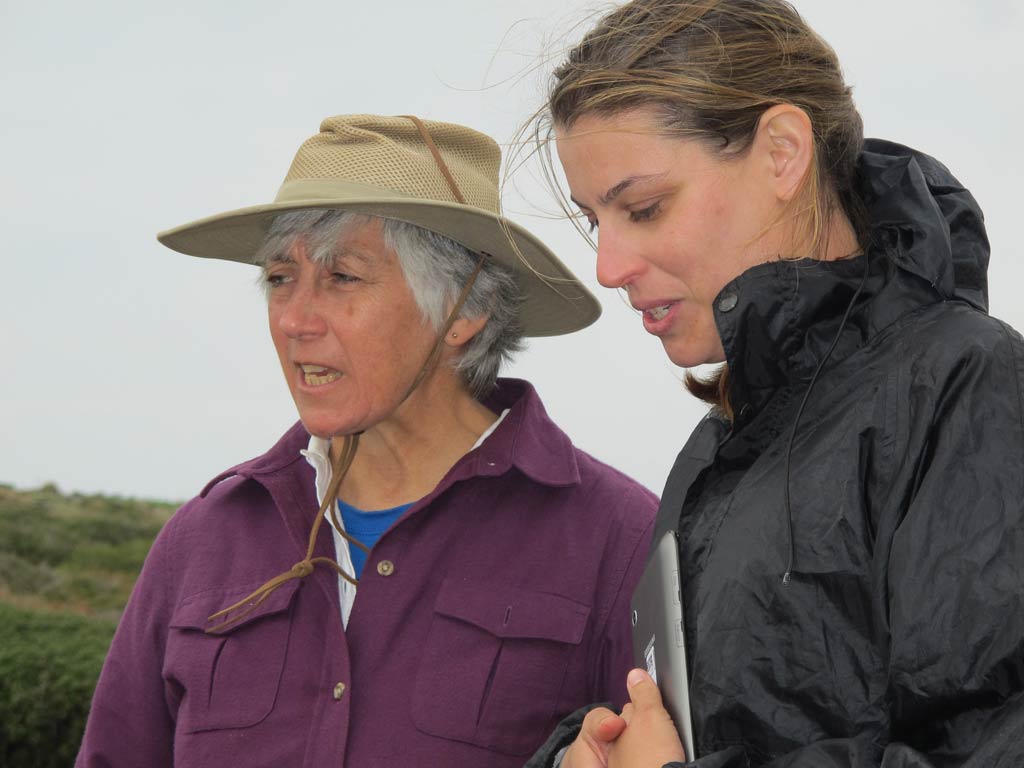
Just as our investigations are able to use technologies and techniques that didn’t exist in the 1960s and 70s, so, in years to come new technologies we can’t imagine now will enable different types of analysis which might be able to provide more and/or different information than is possible now.
The 60s/70s team who worked at Zagora were really ahead of their time in their field method, for example, in very careful sieving and in the treatment of all facets of whatever came out of the ground. But there are now new techniques available including non-invasive pre-excavation techniques as an alternative to excavation (for example, the geophysical analysis that was conducted last year at Zagora) and also new analytical techniques post-excavation.
The 60s and 70s excavations looked in detail at the fortification wall, temple area and how individual domestic units functioned, domestic storage, etc. But there were all kinds of aspects that they were not able to fully consider, such as the industry of the site – whether that was metalworking, textile-making or pottery-making – the basic industries that these settlements depended on.
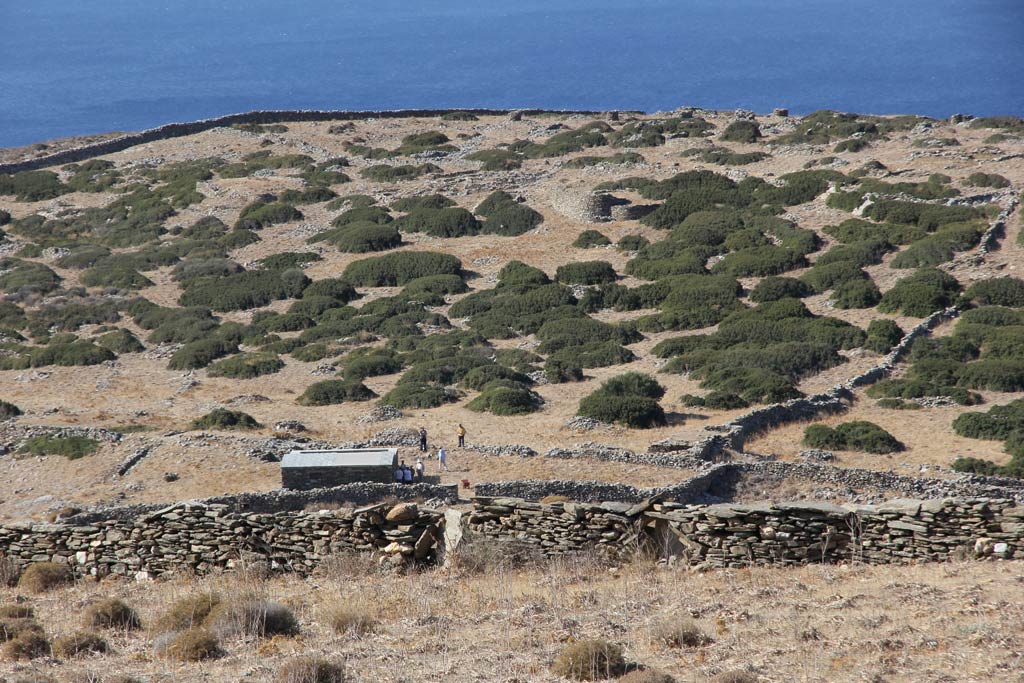
The Andros Museum display at Chora reflects the awareness of and interest in those questions by the archaeologists working at Zagora in the 60s and 70s. But because they had to end the fieldwork when they did and because they had such monumental, ground-breaking work to do on pottery chronology, and comprehending the architecture design, they focussed on the local domestic unit level.
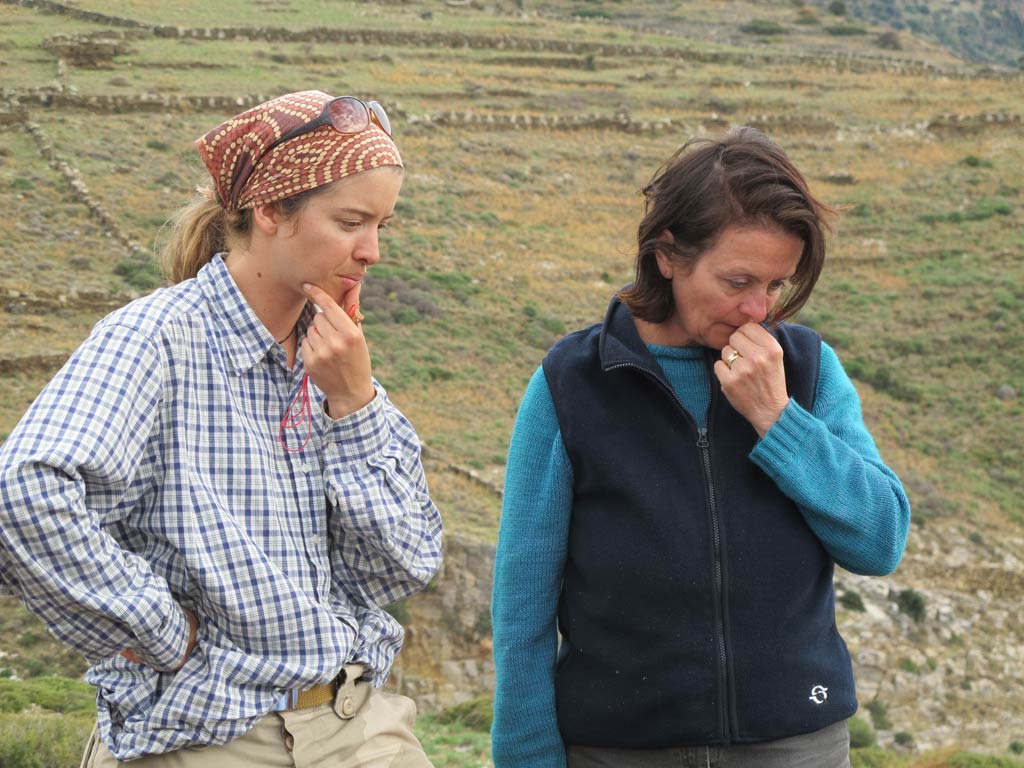
The ZAP directors are trying to broaden that to the settlement level. For example, the research of the 60s and 70s focussed on the interiors of domestic buildings. This year the aim is to develop our understanding of how outside and/or communal spaces may have been set up and used.
Specialties and technologies employed at Zagora in 2013

Last year, the key specialisations and technologies employed at Zagora were geological/geomorphological and geophysical – to further understanding of the landform and what may lay beneath the soil surface. These analyses helped to determine where the excavation trenches would be sited this year.
Geologist, Dr Yannis Bassiakos, will return to Zagora this year to further examine the geology and geomorphology of the site and surrounding land.
Specialties and technologies that will be employed for the first time at Zagora in 2013 include: aerial (kite) photography (Dr Hugh Thomas and Adam Carr), satellite imaging (Dr Adela Sobotkova and Petra Janouchova), 3-D modelling (Dr Matt McCallum), wet sieving of marine debris (Dr Tatiana Theodoropoulou) and wet sieving of seeds (archaeobotanist, Dr Evi Margaritis).
Other posts on this blog will describe this work.
The next post will continue with part 2….
Thanks
Thanks to Prof. Margaret (Meg) Miller and Dr Lesley Beaumont for the conversation on site at Zagora on Wednesday 25 September 2013 which provided most of the content for this post.
* As a general rule, I don’t include professional designations such as Professor, Doctor, etc. when writing posts for this blog. That is because there is such a profusion of distinguished academics and professionals working on the Zagora Archaeological Project that the posts would be littered with doctors. Another reason is I think leaving the professional designations out generally helps to keep the tone of the blog friendly, informal, accessible and easily readable. However as this post introduces the directors’ approach to this year and also some of the specialists working on the project this year, I thought it worthwhile to include the designations in this post, so you can see just how many distinguished people are working on the project.
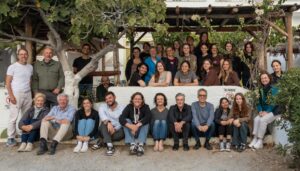
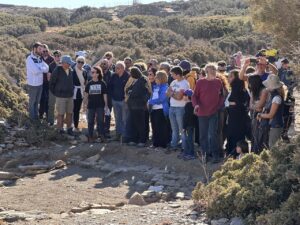
2 thoughts on “Directors’ plans for 2013 excavations at Zagora – an overview – part 1”
Thank you for the opportunity to follow the work on site.I’m in the Queensland Friends of AAIA and I have told our members about the blog. I hope as many as possible will make use of the technology to become ‘armchair archaeologists’.
The Qld Friends committee are pleased to see the Institute resume work at Zagora. Some of our members participated at Torone and we are all keen to continue our fund- raising to support ZAP.
Good luck and best wishes from Qld Friends.
Hi there, Chris – kind thanks for your comment, and here is a reply from Stavros:
Dear Queensland Friends,
Many thanks for your message. It is very gratifying to know that our excavations here on Andros are being followed by the supporters of the Institute. As Irma’s dispatches have informed the wide world we’re progressing fruitfully with our research at Zagora, trying to extract as much information as possible -both with traditional archaeological methods and with new whizz-bang instruments- on the Days and Lives of the settlement’s inhabitants. We have another four weeks to go in the field and everybody’s archaeological sensors are primed to make the most of this time. We’ll keep you posted!
Once again, thank you for your interest and support,
Stavros
(Dr. Stavros Paspalas, Deputy Director, AAIA)